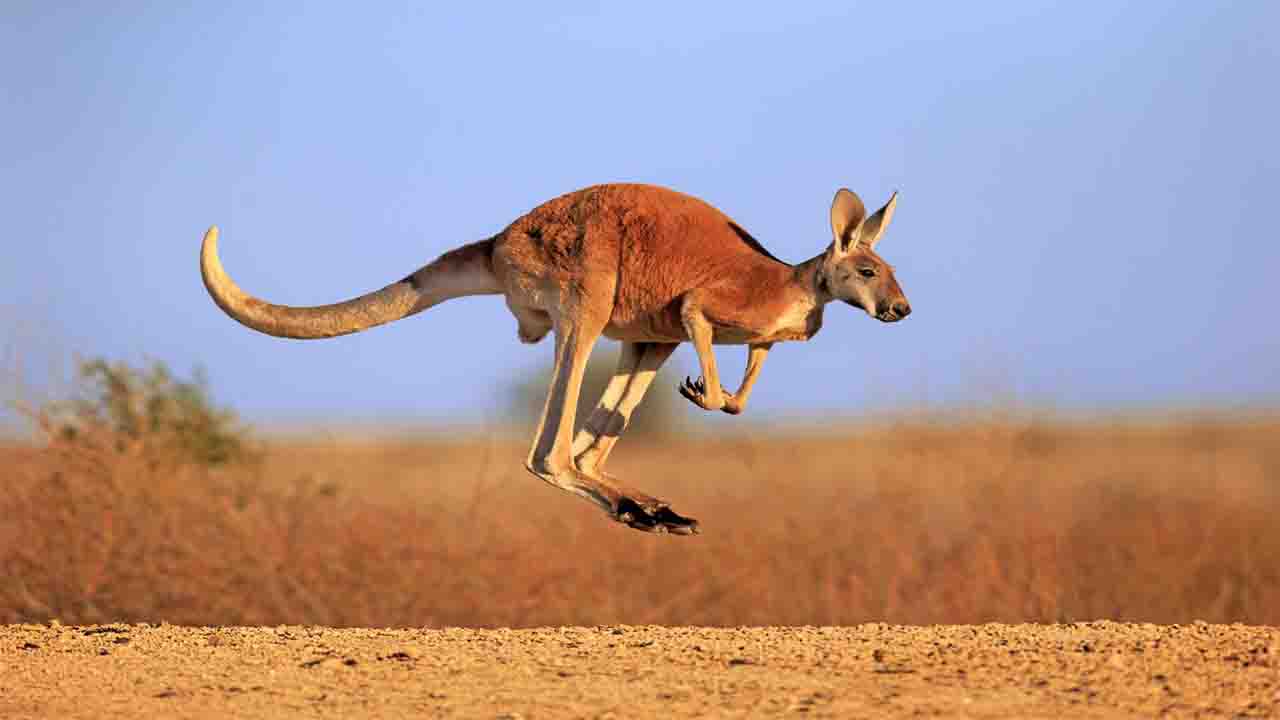Science & Technology, UK (Commonwealth Union) – A key distinguishing feature of kangaroos has been their movement through hopping, however a new comprehensive analysis conducted by researchers from the University of Bristol and the University of Uppsala has found that extinct kangaroos utilized alternative ways to hopping.
The scientists emphasized that other kinds of large kangaroos, in the not-too-distant past, possibly moved around in different ways like striding on 2 legs or moving with all 4 legs.
A recent review published in Alcheringa: An Australasian Journal of Palaeontology presented compelling evidence challenging the notion that large-bodied kangaroos achieved evolutionary success solely through their specialized endurance-hopping abilities. The researchers highlighted alternative pathways that contribute to the success of larger kangaroo species.
Covering a span of 25 million years, this comprehensive review explores the fossil record to investigate the locomotion patterns of various kangaroo species and their relatives, including wallabies, tree kangaroos, and rat kangaroos. The study delves into the rich fossil evidence to shed light on the locomotive behaviors of these marsupials throughout their evolutionary history. The study also introduces fresh analyses of metric data from limb bones and ankle bones, which bolster previous hypotheses regarding locomotor behavior.
Collectively, the findings suggest that the characteristic high-speed endurance hopping observed in modern large-bodied kangaroos was likely uncommon or absent in all but a few lineages of larger-bodied kangaroos. These lineages, including the direct ancestors of present-day red and grey kangaroos, exhibited such hopping capabilities. But, the diversity of kangaroo gaits was reduced after the Late Pleistocene extinctions of larger animals, both inside Australia and on other continents.
Even though just about every kangaroo presently, small and large, utilizes hopping gaits to a certain extent, the fossil record demonstrates that the locomotory abilities of certain extinct kangaroos were diverse in comparison.
During the late Oligocene to middle Miocene period (approximately 25 to 15 million years back), the earliest recognized basal types of kangaroos likely relied on quadrupedal bounding, climbing, and slower-speed hopping as their key modes of locomotion. Present-day kangaroos employ quadrupedal locomotion at slow speeds, with larger species utilizing pentapedal locomotion by utilizing their tail as a 5th limb. However, all these early kangaroo forms were small-bodied, weighing under 12kg. It was not until the late Miocene, approximately 10 million years back, coinciding with an elevation in aridity and the expansion of openly vegetated habitats, that larger-bodied kangaroos weighing over 20kg began to appear.
Hopping becomes functionally challenging as body size increases. As a result, some members of the subsequent kangaroo radiation developed specialized anatomical features making it possible for efficient higher-speed hopping at body sizes exceeding 35kg. Modern large kangaroos exhibit remarkable hopping abilities, but none exceed 100kg in weight, with most individuals weighing under 70kg. Many extinct kangaroo species were considerably larger than this and physically too massive to hop, as indicated by researchers.
Lead author Professor Christine Janis from the University of Bristol, School of Earth Sciences says “We want people to appreciate that large kangaroos were much more diverse as recently as 50 thousand years ago, which may also mean that the habitat in Australia then was rather different from today.”
“In fact, modern large hopping kangaroos are the exception in kangaroo evolution.”
The recent data made available on the length of the tibia (shin bone) together with the calcaneum (ankle bone) further emphasized the previous hypotheses of locomotor differences from modern kangaroos in these 2 extinct groups. Co-author Adrian O’Driscoll, a prior Msc, student in the Palaeobiology program at Bristol and presently a PhD student at the University of York contributed in this regard.
Professor Janis further indicated that assuming that an elevation in continent-wide aridity following the end of the Miocene selectively gives a preference to hopping kangaroos is overly simplistic. Hopping is just one of many gait modes taken up by kangaroos both in the past as well as in the present and the fast endurance hopping of modern kangaroos must not be considered as some “evolutionary pinnacle.”








